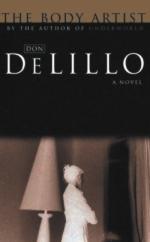
|
<%-- Page Title--%> Book Review <%-- End Page Title--%> |
||||||
|
<%-- Volume Number --%>
Vol 1 Num 135
<%-- End Volume Number --%>
|
|
December 26, 2003 |
|||||
|
<%-- Navigation Bar--%>
|
KIM BUNCE
The
Body Artist After the revolution comes... well, what, exactly? Three years ago, with Underworld, Don DeLillo exploded the scope of the contemporary novel. He proved that it could fuse historical stringency with Cold War paranoia; could provide an arena for our techno-dreams and urban myths. His book was an 827-page manifesto for the connexity and sweep of the late twentieth-century imagination, and, as Martin Amis observed in the New York Times, his voice 'suddenly filled the sky'. He has followed that mushroom cloud of literary energy with something small and, by comparison, very nearly mute. The Body Artist feels like a wilful contraction of DeLillo's powers, a self-conscious rebooting of his sensory memory, almost an aftershock of humility. It returns this most daring of writers to first principles: how to construct sentences that properly describe the world; how to build a syntax adequate to extremes of emotion. If Underworld required the reader to think of Joyce, The Body Artist brings to mind, in the wariness of its prose, Beckett. Having spent most of his writing life revealing what of the present moment language might nail down, DeLillo here examines the substance of experience it can only grope towards. In some senses, all of this is by way of preparation. Though she does not know it as they routinely bicker over news and cereals, this will be the last morning Lauren will spend with her husband. After breakfast he drives to his ex-wife's apartment in Manhattan and shoots himself in the head. The remainder of the novel is concerned with Lauren's attempts to inhabit her sense of being 'sexually and abysmally alone'. DeLillo's characters have often been super-sensitive to the aura and nuance of everyday objects, the strangeness of them. Here, he rounds on that quality, makes it his subject. After her husband's death Lauren needs to reconstruct her life into a narrative, but it refuses cause and effect. Driving, she finds herself in that state where 'all the cars including yours seem to flow in dissociated motion... and the highway runs in a white hum'. For her art and for her sanity she commits herself to the 'gyrate exaggerations, the snake shapes and flower bends' of yoga; she relearns how to breathe; she cuts her hair and sheds her skin, obsessively exfoliating and scraping and pumicing, making herself raw to the world. The author returns -- a persistent theme-- to the dehumanising effects of technology, the ways in which reality is diminished by electronic mediation. Lauren, clinging to a sense of what is human, becomes intrigued, here, for example, by the automated voice on an answering machine message 'one male voice in seven different time cycles. But not male exactly either...' She finds a metaphor for her loneliness on the internet, a fixed camera on a Finnish street in the middle of the night and watches 'cars entering and leaving Kotka, or just the empty road in the dead times.' She imagines -- pure DeLillo -- 'that someone might masturbate to this'. In this state, ascetic and delusional, she becomes fascinated with, and unsure of, the boundaries of the self. The author has been criticised in the past for not creating 'rounded' characters though the precise point of his characterisation has often been to show an individual -- Lee Harvey Oswald in Libra is the prime example -- not as a fixed point but a series of desperate and dissolving gestures. The Body Artist takes that idea to its logical extreme: by the end of the book, in performance, Lauren achieves literal shape-shifting, becoming, briefly on stage, someone entirely other. This process begins in earnest when, convinced that there is someone else in the old house, she walks into a little-used room one day to find a boy seated on the bed. She is unsure if he is a ghost, or a 'foundling', or an externalised embodiment of her loss, but he speaks in a voice uncannily like that of her late husband. At the heart of the novel are Lauren's conversations with the boy, which she tapes, and interrogates, a kind of fragmentary pillow talk from beyond the grave, or from back in time, or an inspired act of mimicry. The boy, is an 'as if', he exists only in relation to other references, and in him time has slowed to a full stop. DeLillo enjoys the possibilities of this suspension of reality. 'The world is full of abandoned meanings,' he wrote in White Noise; 'Believe everything,' says a a character in Underworld, 'Everything is true.' Here he focuses that sense on the personal and the intimate, brings it to bear on the strained moments in which selfhood might slip through our fingers. In doing so, he fumbles for something archetypal -- Cathy Earnshaw or Tennyson's Mariana in her moated grange are not far from Lauren as she listens to her unreachable house guest 'shadow-inching through a sentence, showing a word in its facets and aspects, words like moons in particular phases'. 'I write to find out how much I know,' DeLillo is fond of saying, in his rare interviews. 'The act of writing for me is a concentrated form of thought.' This is a book, more than any of his previous work, that confronts how much he doesn't know, and the ways in which concentrated forms of thought might let you down. The result is a novel that is both slight and profound, a distilled meditation on perception and loss, and a poised, individual ghost story for the twenty-first century.
|
||||||
